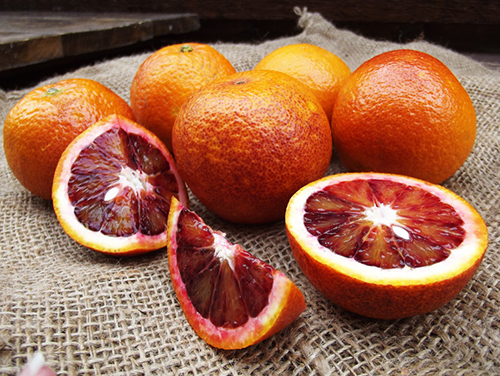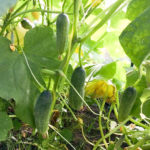Moro orange variety
Moro orange (Citrus sinensis cv. Moro) belongs to the group of so-called korols, or navel oranges. Its second common name is Moro Blood Orange. There are several varieties of bloody oranges; all of them, justifying their nickname, differ in the color of the peel and pulp. The fruits of these plants are not orange on the outside, as usual, but rather reddish, crimson. The same applies to the color of the pulp. Moreau is perhaps the reddest of this cohort, and also the most decorative, which has earned him immense popularity among amateur citrus growers.

A bit of biography
It is believed that our hero is a fairly young species that arose at the very beginning of the 19th century. His ancestry stretches to the province of Lentini, in the vicinity of the Sicilian city of Syracuse.
Interesting! All red, navel oranges developed as industrial crops on this island, therefore they are also called "Sicilian".
Experts believe that this variety is a kidney mutation of the famous Italian orange "Sanguinello Muscato". However, there is another, less popular version, that he is a hybrid between pomelo and tangerine.

Curious! There were even rumors that Moreau arose by crossing an orange and a pomegranate (his flesh is so red, almost dark). However, this is completely impossible, because such plants are too remote in their biological nature.
Moreau belongs to the common industrial varieties. Its main advantage is the early ripening of the fruits, as well as their unusual taste properties.
Features of the crown
The size of the tree is average, sometimes even below average. The shape of the crown is round, wide, the branches tend to grow to the sides, which creates certain inconveniences for room maintenance. The plant is relatively frost-resistant, capable of withstanding a short-term cold snap down to minus 5 ° C.

It is worth noting that the variety develops well only in conditions as close as possible to those that nature has created in Sicily. In indoor maintenance, it is complex: in the early years it grows slowly, especially on its own roots, the fruits rarely ripen to the degree of redness that distinguishes the plant from others. Strongly susceptible to attack by red spider mites.
Bloom
The size of the flowers is small, usually up to 3.5 cm in diameter, they are very fragrant, the smell is sweetish. Small inflorescences are placed on the branches. The petals are always painted in a pale purple hue.

Description of fruits
This is the most unusual part of our plant. Much has been said about their unconventional color. Let's add that the color is highly dependent on the growing conditions. Ideally, during the ripening of the fruit, there will be a significant range of daily temperatures: cold nights and hot days.
Without this, the fruits lose their bright redness, become pale, almost of a standard color. Other external characteristics:
- The size is small (from 5 to 8 cm in diameter), the usual weight ranges between 120 and 180 grams.

- Despite the fact that Moreau is in the group of umbilical oranges, his fruits are often devoid of a characteristic bulge, or it is almost invisible.
- They can hang on a tree for a long time without losing their properties, but when torn off they quickly deteriorate. This is one of the reasons why they are seldom sold outside of Italy.
- The shape is oval, the rind is dense, it is not easy to separate from the pulp. A slight tuberosity is visible on the surface, but sometimes it is absent.
- On the branches, fruits tend to be placed in small clusters, from 3 to 5 pieces, which gives the bush an additional decorative effect.

The pulp is especially interesting. It is very juicy, intensely red, almost black.Sometimes on its ruby background, darker veins are visible. The longer the fruit hangs on the tree, the darker the color of the pulp becomes.
Consumers note that the taste of these oranges is not that sweet, but very unusual and delicate. It is characterized by a complex palette, in which citrus fruits, raspberries, and even strawberries with currants are felt. This amazing aroma is the main advantage of this plant. Its fruits are used in the confectionery industry, used for the preparation of juices, mousses, and other drinks. We emphasize once again that the taste is highly dependent on the growing conditions.
There are few seeds inside the fruit, most often they are completely absent. The pulp itself consists of 10 slices.
Thus, we have an early ripening, tasty, highly decorative variety of oranges, which has undoubted industrial value, but not easy to keep in the room. The more interesting it is to grow it!








